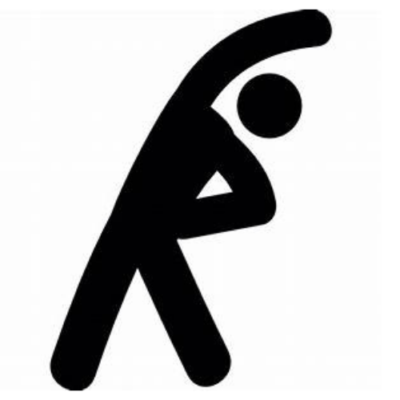
Clients frequently tell me that a muscle or part of their body feels tight. Sometimes the tightness affects a daily function, like turning their head when backing out of the driveway. Sometimes it’s a feeling of tightness that just feels uncomfortable. Or sometimes it’s an aspiration, like wanting to achieve a yoga pose. The optimal way to improve flexibility varies from person to person and the more you understand about your body, the more likely you are to choose a successful approach.
There are several possible causes of the tightness and understanding the cause can guide you to choosing the best path forward.
Freedom of movement is determined by both joints and muscles. The causes of tightness are directly related to the tissues that make up muscles and surround joints. Joints consist of 2 or more bones connected by tissue that is essentially non-elastic. This connective tissue, or fascia, encapsulates the joint. The connective tissue can become looser with warmth and stiffer with cold. Muscles consist of elastic components, cells that can contract and stretch, as well as the same fascia that surround joints. For a part of your body to move freely, there must be enough length in the muscles and enough looseness in the joint capsules.
Some people experience stiffness mainly in their joints, like having arthritis in your back or knees. For joint stiffness, activities that increase warmth, such as repeated movements or active range of motion, can be very helpful. The repeated movement warms the fascia which makes it looser. Looser fascia means less stiffness. While this exercise is very effective, staying in one position will cause the fascia to cool down and stiffen again. So with joint stiffness, improved flexibility is an ongoing activity, like doing these repeated movements frequently throughout the day and especially after being in one position for a while. The true cause of the stiffness is likely arthritis and unfortunately, exercise is not a cure. It can, however, give you the power to improve the way you feel.
So after sitting for a while, you might gently make small, painless bending and straightening motions in your knee 20 or 30 times without stopping. Lots of repetitions without stopping is important because it generates warmth which loosens the fascia surrounding your knee joint.
If the tight feeling is due to a tight muscle, a different type of exercise is needed. In this instance, the muscle is too short. Tight muscles do benefit from small, repetitive movements that help warm the fascia in the muscle. However, the muscle needs to be stretched in order to gain length.
A stretching exercise involves putting the target muscle in a position where one end is held steady and the other end is moved away. Picture stretching an elastic band. You must hold one end steady and move the other end for the stretch to happen. When held long enough and often enough, 3 repetitions, 20-30 seconds each, the muscle will change so that it gains length and you feel more flexible. For example, the hamstring attaches to the pelvis and also to the shin just below the knee on both sides. To stretch, you might sit, which holds your pelvis steady, and straighten your knee, which moves your shin, until you feel a moderate pull. You could also hold your shin steady, and move your pelvis until you feel a stretch. In both cases, you need to hold the position for 20-30 seconds, rest, and repeat the activity at least 3 times in a row. Any stretch performed this way daily over several weeks will lengthen your muscle and give you more flexibility.
Any exercise should be performed consistently, gently, and without pain! Consult with your exercise trainer or Physical Therapist for exercises specifically tailored for your specific needs.

